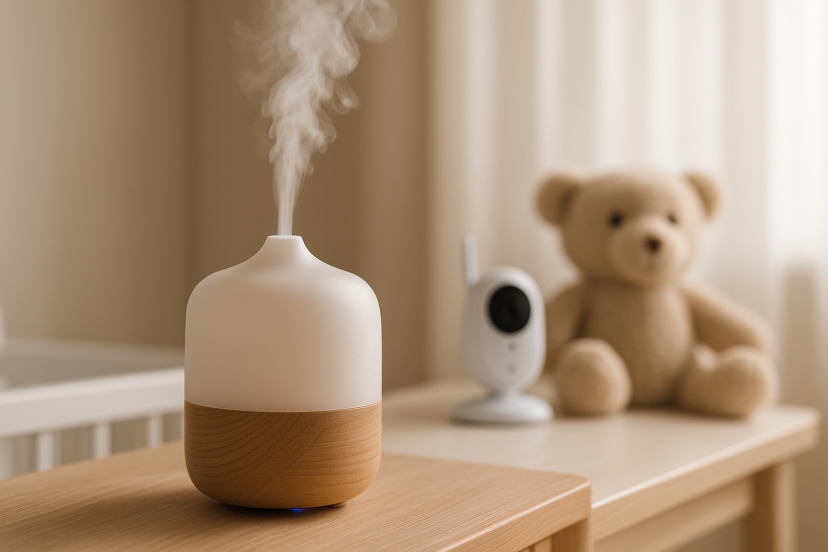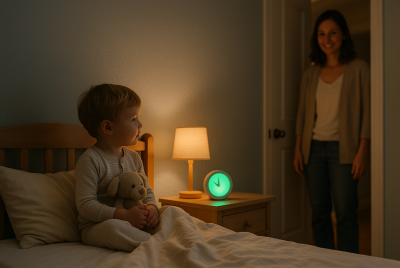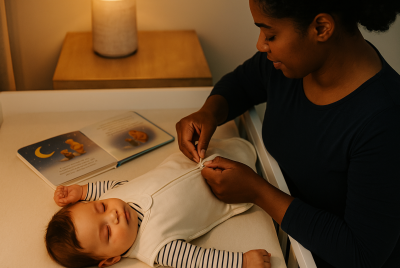7 Calming Room Diffusers + Essential Oils Safe for Babies
We may earn a commission for purchases made using our links. Please see our disclosure to learn more.
Picture this: the room is dim, your baby’s breathing is soft and steady, and the air smells gently of lavender—nothing heavy, nothing heady, just that whisper of calm you’ve been craving. That’s the promise behind room diffusers + essential oils. But let’s be honest—when you’re caring for a tiny human, “natural” doesn’t automatically mean “safe.” You want practical guidance, not guesswork.
In this guide, you’ll find the sweet spot: how to use room diffusers + essential oils in baby spaces with caution, care, and confidence. We’ll cover safety basics, bedtime routines, and my favorite parent-approved diffusers, plus research-backed notes, FAQs, and an easy comparison table so you can choose fast.
Why Room Diffusers Matter for Baby Spaces
Diffusers mist tiny droplets of water and aroma into the air, transforming the vibe without open flames or chemical-laden sprays. Compared with candles and plug-ins, ultrasonic diffusers offer a gentler way to create a soothing atmosphere when used correctly—and briefly—in well-ventilated rooms. Some pediatric resources still advise caution (and even avoiding constant, room-wide diffusion), which is why limiting time and keeping airflow in mind is key.
Safety Snapshot: Are Essential Oils Safe for Babies?
Short answer: They can be, if you go slow and keep it light. The American Academy of Pediatrics and hospital guidance emphasize that essential oils are potent; use sparingly, store out of reach, and avoid undiluted contact or prolonged exposure—especially for newborns and infants. Diffuse for short sessions (think 10–20 minutes) and watch your baby’s cues. When in doubt, skip it.
Baby-Friendlier Oils to Consider
If your pediatrician gives the green light and your baby is beyond the newborn stage, parents often start with gentle aromas:
- Lavender (Lavandula angustifolia): classic bedtime calm
- Roman Chamomile (Chamaemelum nobile): soft, soothing, apple-like note
- Frankincense (Boswellia carterii): grounding, resinous, used sparingly
- Mandarin (Citrus reticulata): sweet, mellow citrus often preferred over sharper oranges
Always keep the room ventilated and use very small amounts (1 drop can be enough). Industry safety experts underscore caution for kids—less is more.
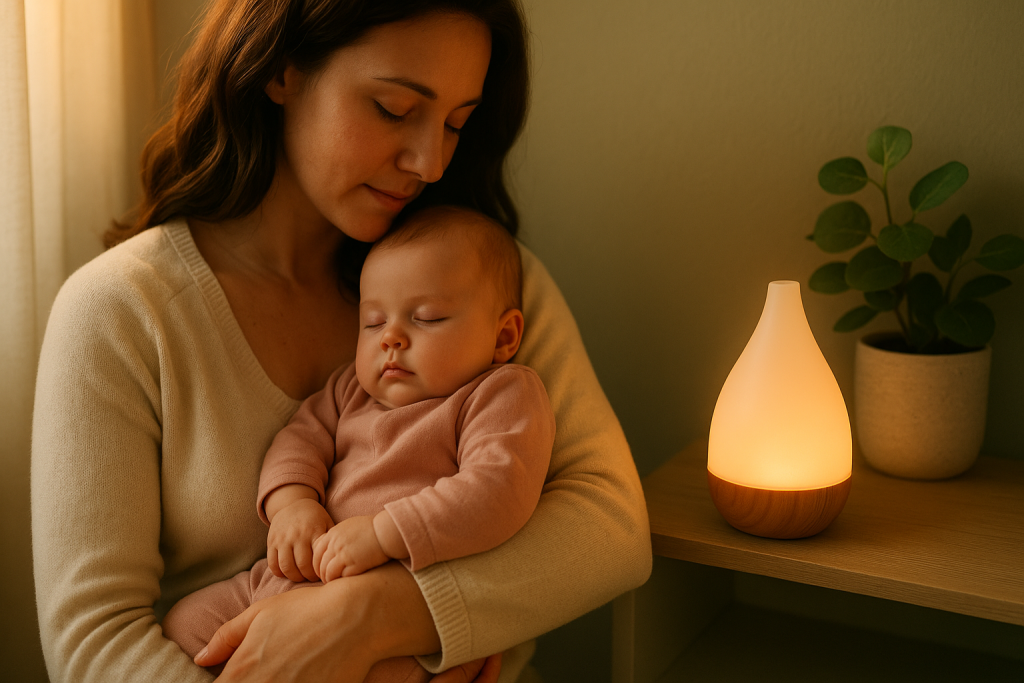
Oils to Skip Around Babies
Avoid strong, mentholated oils (e.g., eucalyptus, peppermint) and anything “hot” or stimulating. These can irritate airways in young children; respected aromatherapy safety sources specifically call out peppermint and eucalyptus for small kids.
How to Diffuse Safely (Step-by-Step)
- Vent first: Crack a window or keep a door ajar.
- Add water, then oil: Start with 1 drop, not 3–5.
- Short sessions: 10–20 minutes, then pause and assess.
- Place away from the crib: Keep the unit out of reach and never blow mist toward your baby’s face.
- Watch for reactions: If you notice fussiness, coughing, or redness—stop.
Some pediatric resources discourage room-wide, water-based diffusion for long periods; if you choose to diffuse, keep it brief and targeted.
Ventilation, Run Time & Placement
Think of scent like sunlight—you want just enough, not a blast. Place your diffuser across the room (not on the changing table or beside the bassinet), and favor intermittent settings when available. If your unit has a nightlight, choose the dimmest mode or turn it off once your baby is asleep.
A Gentle Bedtime Routine You Can Try Tonight
- Dim lights, put on soft white noise.
- Run the diffuser for 10–15 minutes with 1 drop of lavender while you read or feed.
- Turn it off before your baby is fully asleep.
- Tip: The calming effect can still linger in bedding and the room’s micro-airflow—no need to keep it running.
Amazon Picks: 5 Diffusers Parents Love
7 Calming Room Diffusers + Essential Oils Safe for Babies
1) URPOWER 2nd Version Essential Oil Diffuser
Why parents pick it: simple, budget-friendly, and quiet.
- Features: compact tank, auto shut-off, 7-color nightlight.
- Pros: affordable; gentle glow.
- Cons: smaller reservoir.
- Best for: small nurseries or bedside use.
2) InnoGear 150ML Ceramic Diffuser (Handcrafted Stone Cover)
Why parents pick it: clean, minimalist design.
- Features: ceramic cover, 2 mist modes, auto shut-off.
- Pros: stylish and compact.
- Cons: shorter runtime.
- Best for: modern nurseries.
3) Pure Enrichment PureSpa XL (3-in-1)
Why parents pick it: doubles as a humidifier.
- Features: 2L tank, long runtime, soft glow.
- Pros: great for dry climates.
- Cons: bulkier for small rooms.
- Best for: parents in AC-heavy or dry areas.
4) ASAKUKI 500ml Premium Diffuser (with Remote)
Why parents pick it: big capacity + great price.
- Features: 500ml tank, timer, remote, LED lights.
- Pros: runs overnight, intermittent mode.
- Cons: takes more space.
- Best for: larger nurseries or open layouts.
5) Vitruvi Stone Diffuser (90 ml)
Why parents pick it: chic design, looks like décor.
- Features: ceramic matte cover, 8-hour intermittent mode.
- Pros: premium look; intermittent safe mode.
- Cons: higher cost.
- Best for: parents who want function + style.
6) Levoit Aroma Diffuser & Humidifier (2-in-1)
Why parents pick it: multifunction with ultra-quiet operation.
- Features: 300ml tank, ultrasonic mist, auto shut-off.
- Pros: doubles as a small humidifier.
- Cons: tank is mid-size, needs regular cleaning.
- Best for: parents who want a safe diffuser that also combats dry air.
7) NOW Foods Real Bamboo Ultrasonic Oil Diffuser
Why parents pick it: natural, eco-friendly design that blends into home décor.
- Features: bamboo/wood casing, ultrasonic misting, automatic shut-off.
- Pros: stylish and sustainable look; quiet operation; safe auto shut-off.
- Cons: smaller tank compared to big-capacity units.
- Best for: parents who want a diffuser that feels more like a décor piece than a gadget.
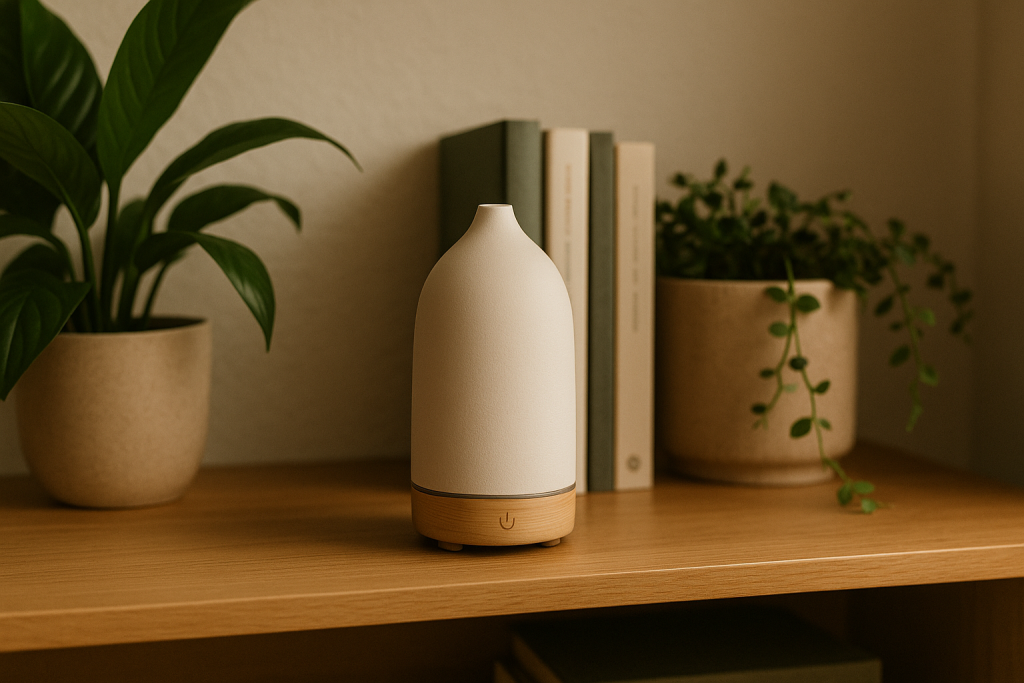
Essential Oil Picks Parents Reach For (Use Lightly!)
- Plant Therapy KidSafe Calming the Child (blend): made for kids; diffuser-friendly when used sparingly.
- Edens Garden OK for Kids – Sleepy Head (blend): bedtime-focused, created for families.
- NOW Foods Organic Lavender: a single-note classic many parents start with.
- Aura Cacia Roman Chamomile (or in Jojoba): gentle, soothing aroma option.
Reminder: Even kid-marketed blends deserve caution. Always keep the door open, run for short intervals, and stop if anything seems “too much.”
Comparison Table: Quick Look at the Five Diffuser
(Specs drawn from manufacturer listings; use essential oils sparingly regardless of tank size.)
| Diffuser | Capacity | Modes/Notes | Why It Stands Out | Best For |
| URPOWER 2nd Version | 100 ml | Auto shut-off, 7-color light | Budget classic | Small nurseries |
| InnoGear Ceramic | 150 ml | 2 mist modes, auto-off | Minimalist ceramic design | Modern décor spaces |
| Pure Enrichment PureSpa XL | 2 L | Humidifier + oil tray | Long humidity runtime | Dry climates |
| ASAKUKI 500 ml + Remote | 500 ml | Timers, remote, intermittent | Feature-rich value | Larger rooms |
| Vitruvi Stone Diffuser | 90 ml | 8-hr intermittent mode | Premium design | Style-conscious homes |
| Levoit Aroma Diffuser & Humidifier | 300 ml | 2-in-1 humidifier | Ultra-quiet, safe | Parents needing humidity + scent |
| NOW Foods Bamboo Diffuser | ~120 ml | Ultrasonic, auto shut-off | Eco-friendly bamboo style | Décor-focused parents |
Research-Backed Notes on Safety & Sleep
1) Lavender & infant soothing: A randomized study reported that lavender bath oil was associated with reduced stress and crying and improved infant sleep—a nudge that gentle aroma, used thoughtfully, may support calmer routines. (Bath context, not room-wide diffusion.)
2) Pediatric cautions on exposure: According to the American Academy of Pediatrics, essential oils are potent and can irritate sensitive airways or skin; avoid undiluted use, store out of reach, and limit or avoid prolonged, room-wide diffusion, particularly in very young infants.
(For caregiver calm: a separate clinical trial in postpartum women linked lavender fragrance with improved sleep quality—helpful for parents even if you keep aroma away from baby.)
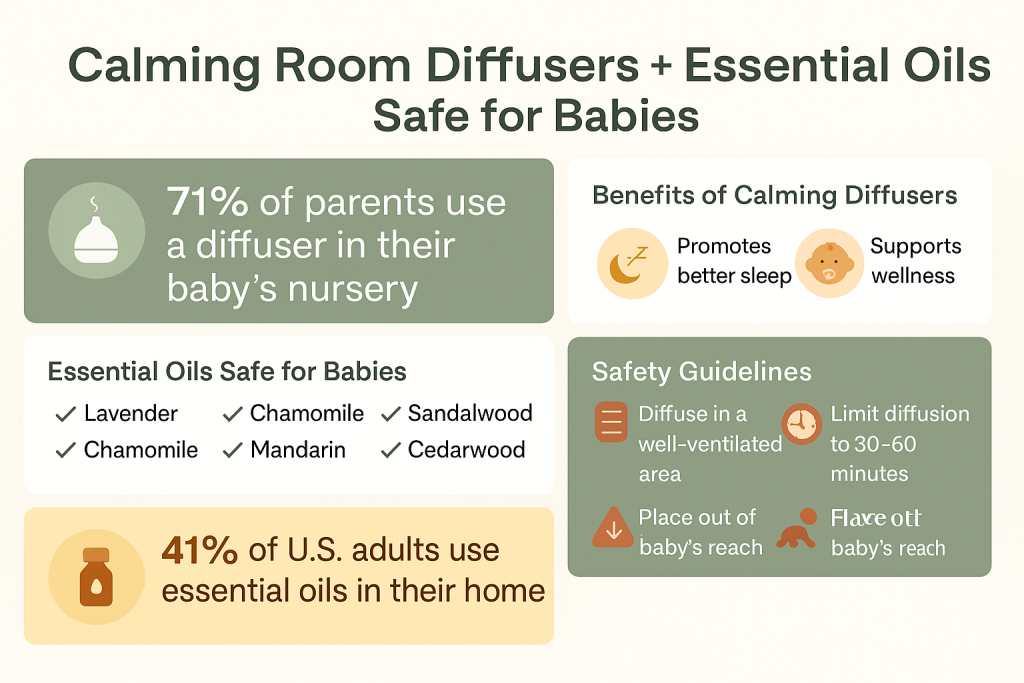
Common Mistakes to Avoid
- Running a diffuser for hours (overexposure ≠ more relaxation).
- Using strong oils (peppermint/eucalyptus) near infants.
- Placing the diffuser close to the crib or blowing mist toward the baby.
- Adding multiple drops “just to smell it” (start with 1).
- Skipping ventilation or ignoring fussiness/coughing cues.
Cleaning & Maintenance Checklist
- Daily: Empty leftover water; wipe the tank dry.
- Weekly: Deep clean with mild soap, rinse well; avoid harsh solvents.
- Monthly: Inspect seals, lids, cables; replace if worn.
Clean diffusers work better, smell cleaner, and reduce residue build-up—especially important when you’re using the lightest possible amount of oil.
Travel & Guest Rooms: Keep Calm On the Go
Visiting grandparents? Bring your routine—but keep it flexible. Diffuse before bedtime for a few minutes, then switch off. A familiar story, swaddle, and lullaby often matter more than scent. If anyone in the home is sensitive to fragrance, skip the oil and just run a humidifier.
Cultural Rituals & Scent Traditions
Aromas carry memory. Maybe your family associates chamomile with calm, frankincense with reverence, or citrus with morning joy. Honor those traditions with short, respectful use and plenty of airflow. The goal is comfort, not intensity.
When to Skip Scent Altogether
If your baby was premature, has respiratory symptoms, or your pediatrician advises against it—choose no scent. You can still create a calm vibe with dim lights, white noise, gentle rocking, and consistent routines (and keep essential oils locked away from curious hands).
FAQs
1) What’s the safest way to start with room diffusers + essential oils?
Wait until your pediatrician says it’s okay, then try 1 drop of a gentle oil (e.g., lavender) for 10–15 minutes in a ventilated room—placed away from your baby’s sleep space.
2) Which essential oils should not be used with babies?
Avoid eucalyptus and peppermint (mentholated oils) and stimulating “hot” oils; these can irritate little airways.
3) Do I need a big tank?
No. Bigger tanks are for humidity/runtime—not stronger scent. For babies, the goal is brief, minimal diffusion regardless of tank size.
4) Can diffusers help babies sleep?
Aroma can support a calming routine, but it’s not a magic switch. One trial linked lavender bath oil with less crying and better sleep in young infants; still, keep diffusion short and get pediatric guidance.
5) Should I run the diffuser all night?
No. Short, pre-bed sessions are safer. Some pediatric resources caution against prolonged, room-wide diffusion for children.
Helpful Resource for New Parents
Curious about milestones beyond sleep? Here’s a quick, parent-friendly guide on when baby teeth typically fall out—great to bookmark for later.
Final Thoughts: A Calmer Room, A Calmer You
You don’t need a cloud of fragrance to create peace—you need consistency, gentleness, and good air. Start tiny, keep sessions short, and choose high-quality gear that fits your space. Whether you pick the budget-friendly URPOWER, the stylish InnoGear ceramic, the humidifying PureSpa XL, the feature-rich ASAKUKI, or the design-forward Vitruvi, let the diffuser support your routine—not define it. Tonight, take a breath. You’re doing this—one soft mist, one quiet minute, one tender bedtime at a time.

